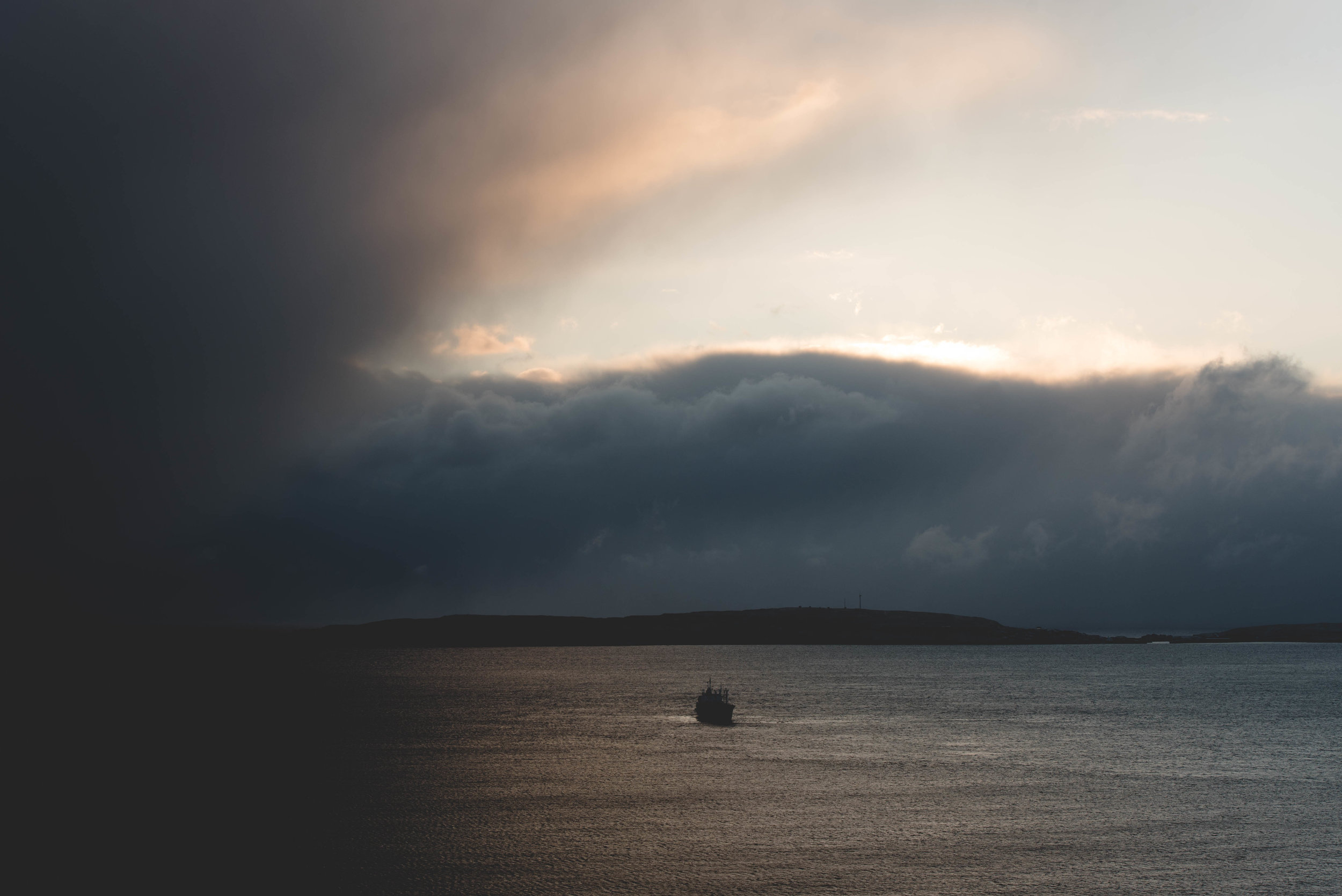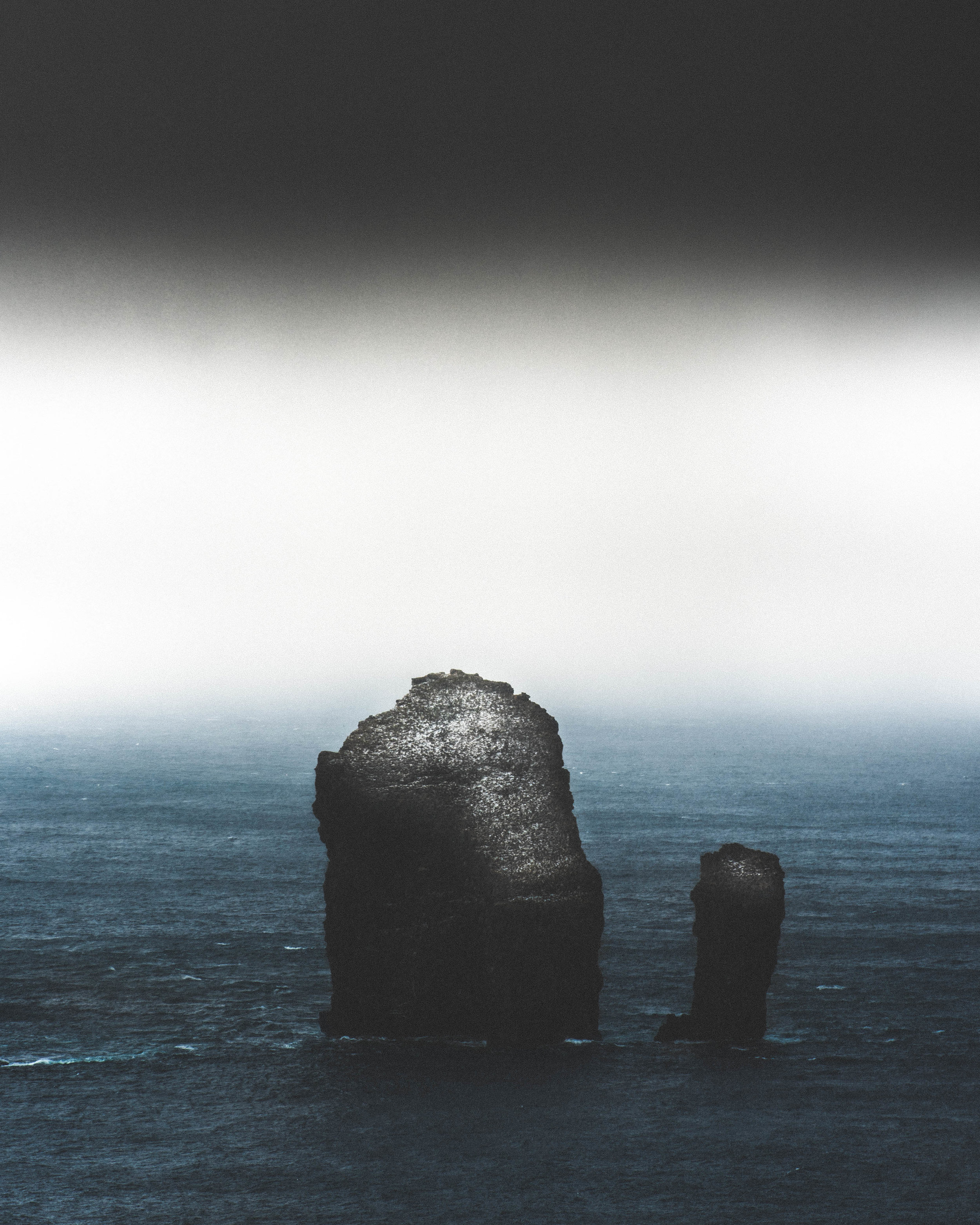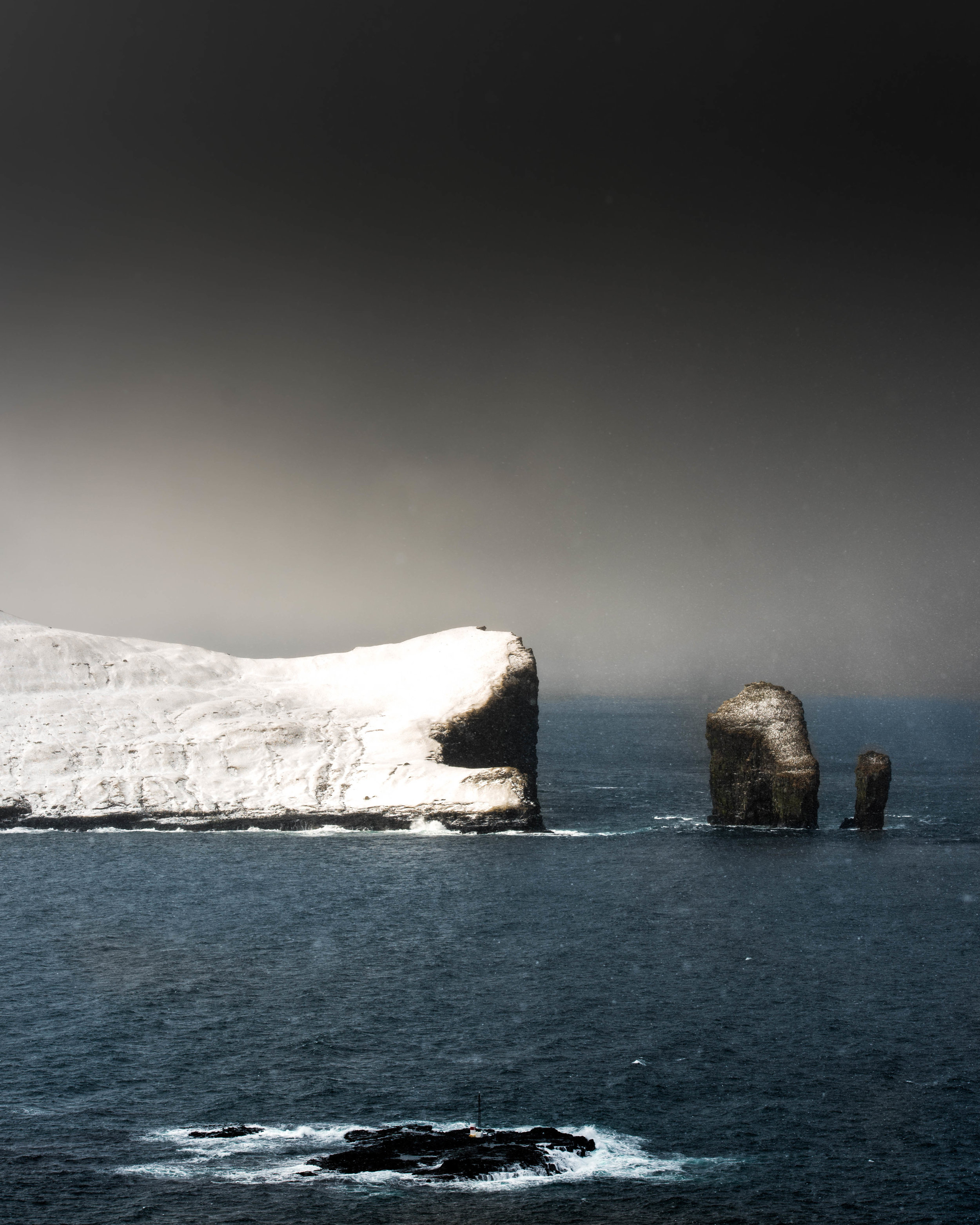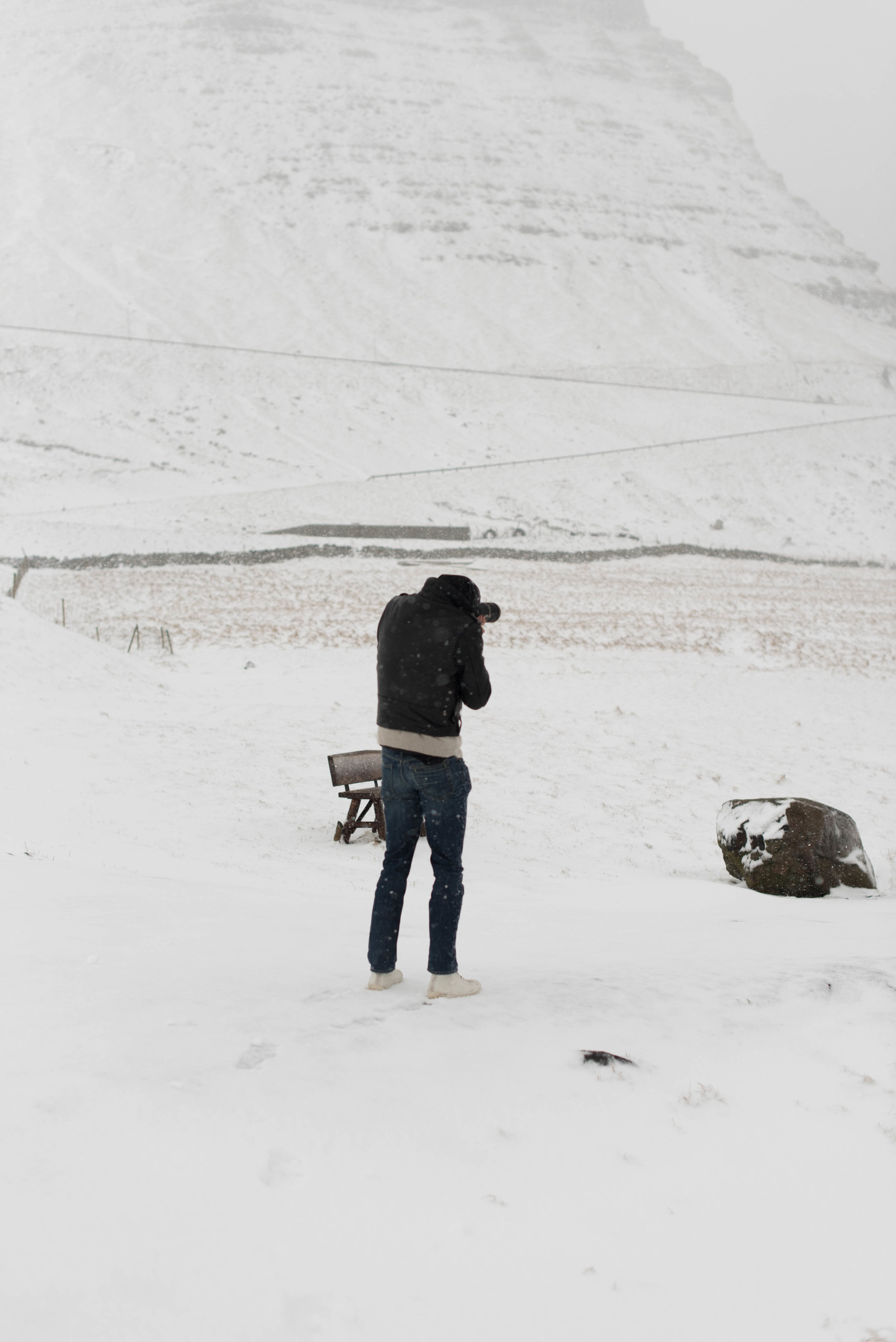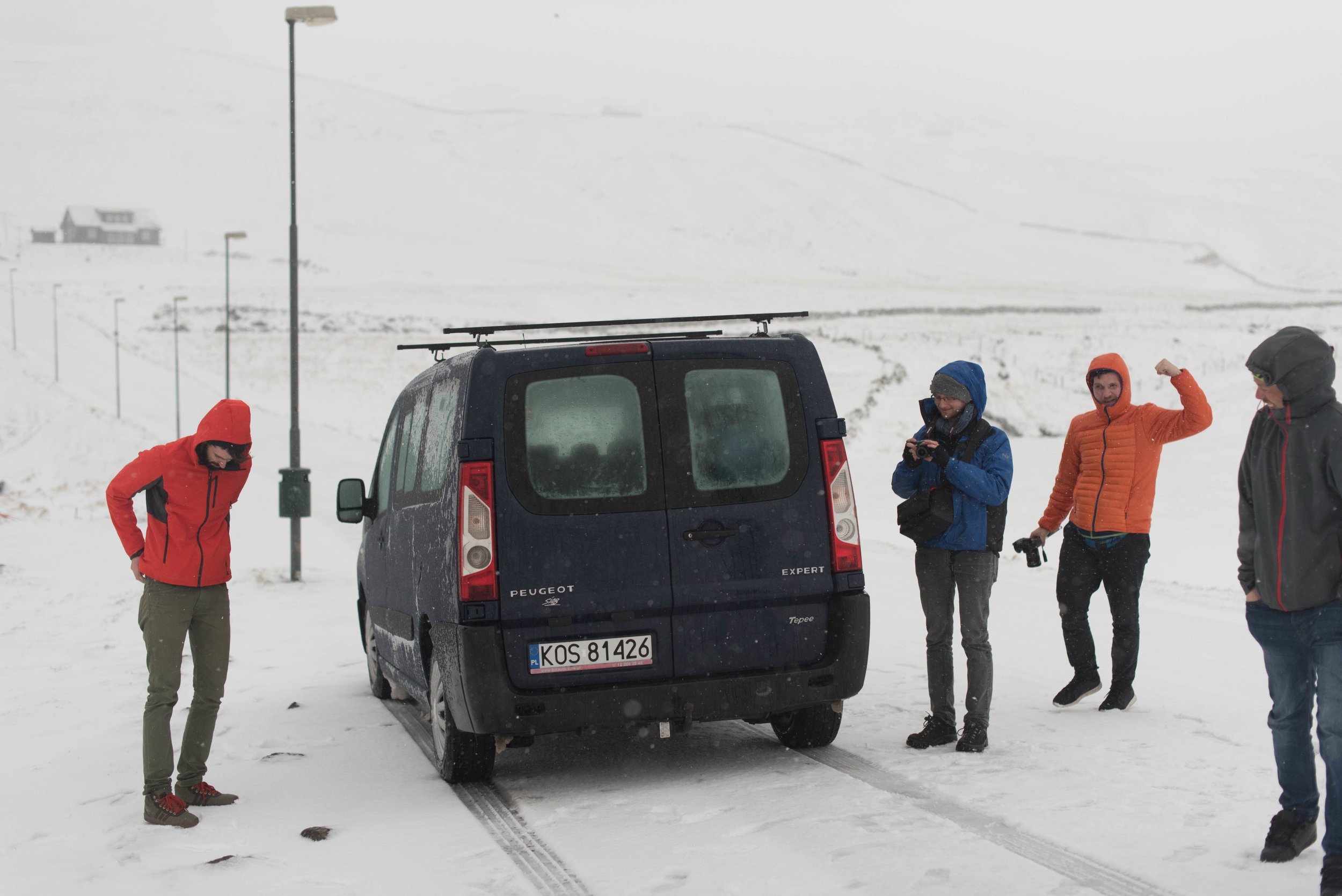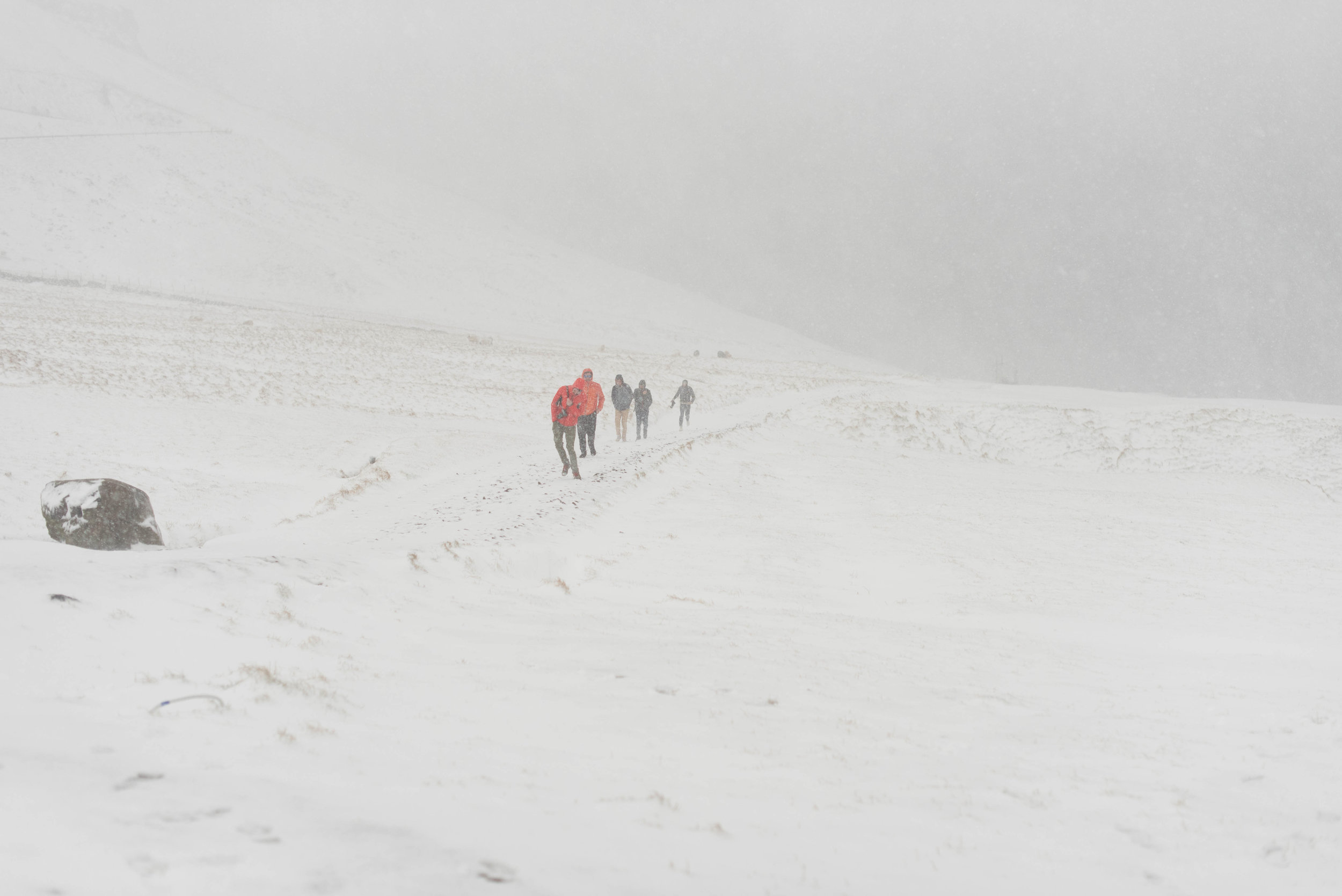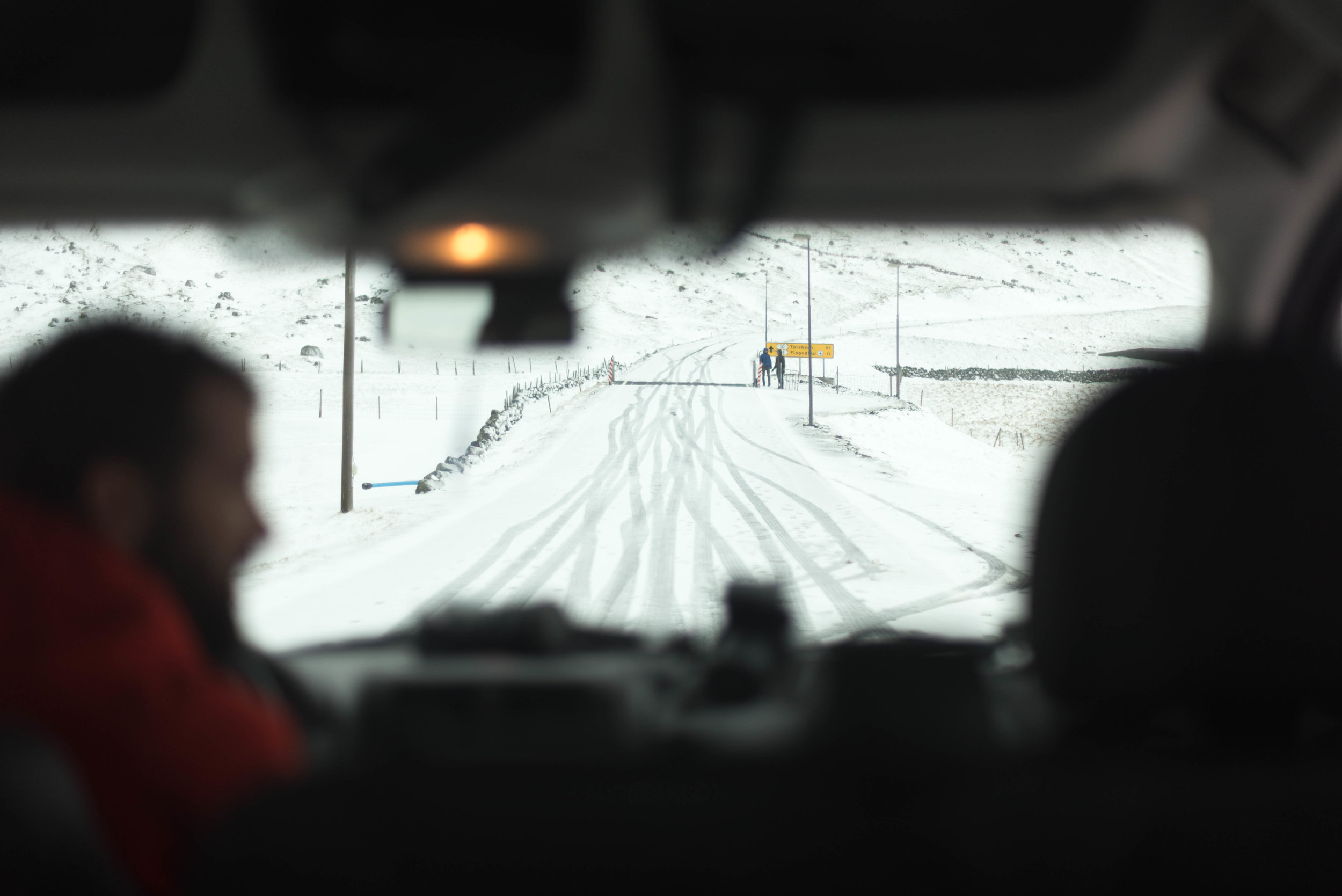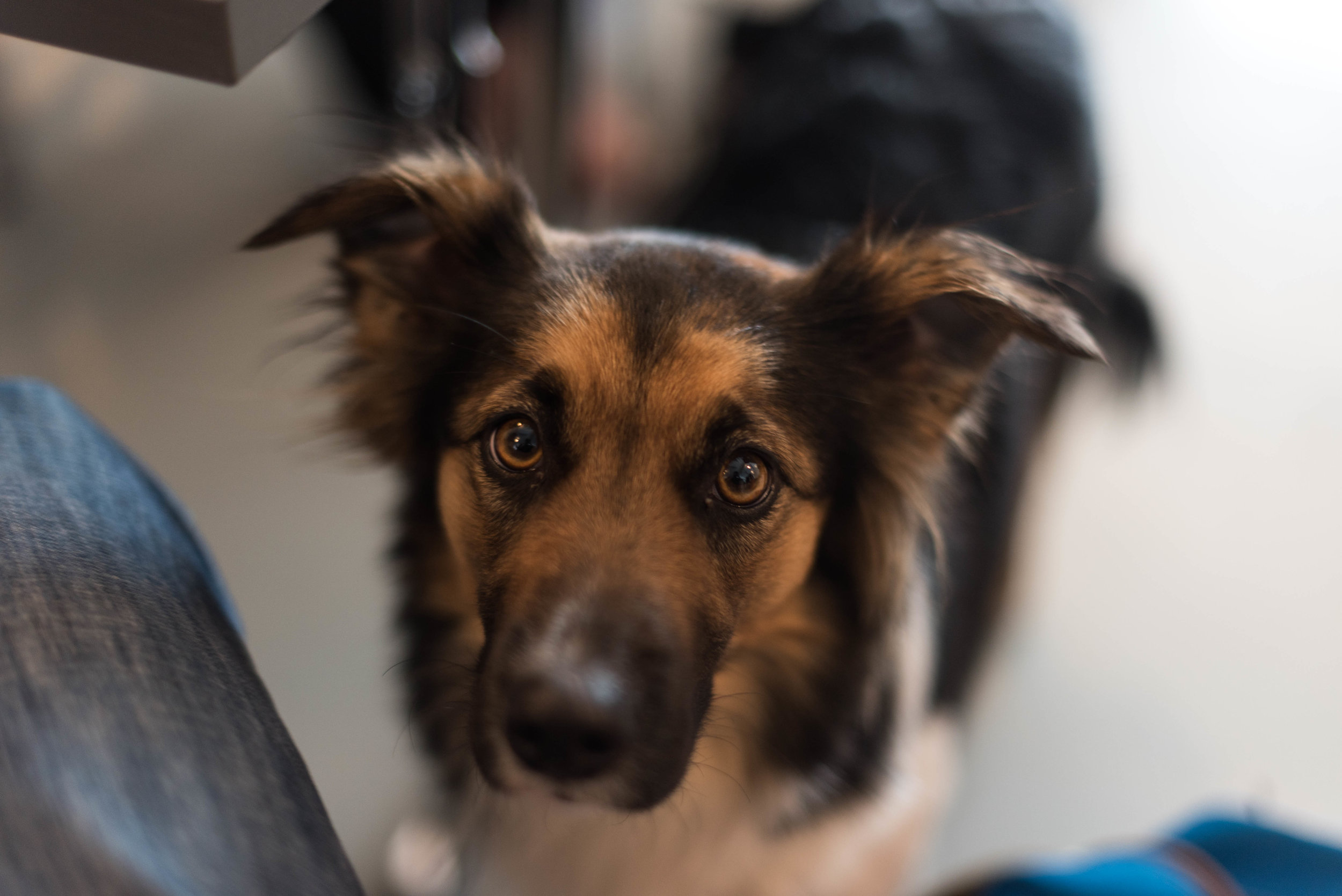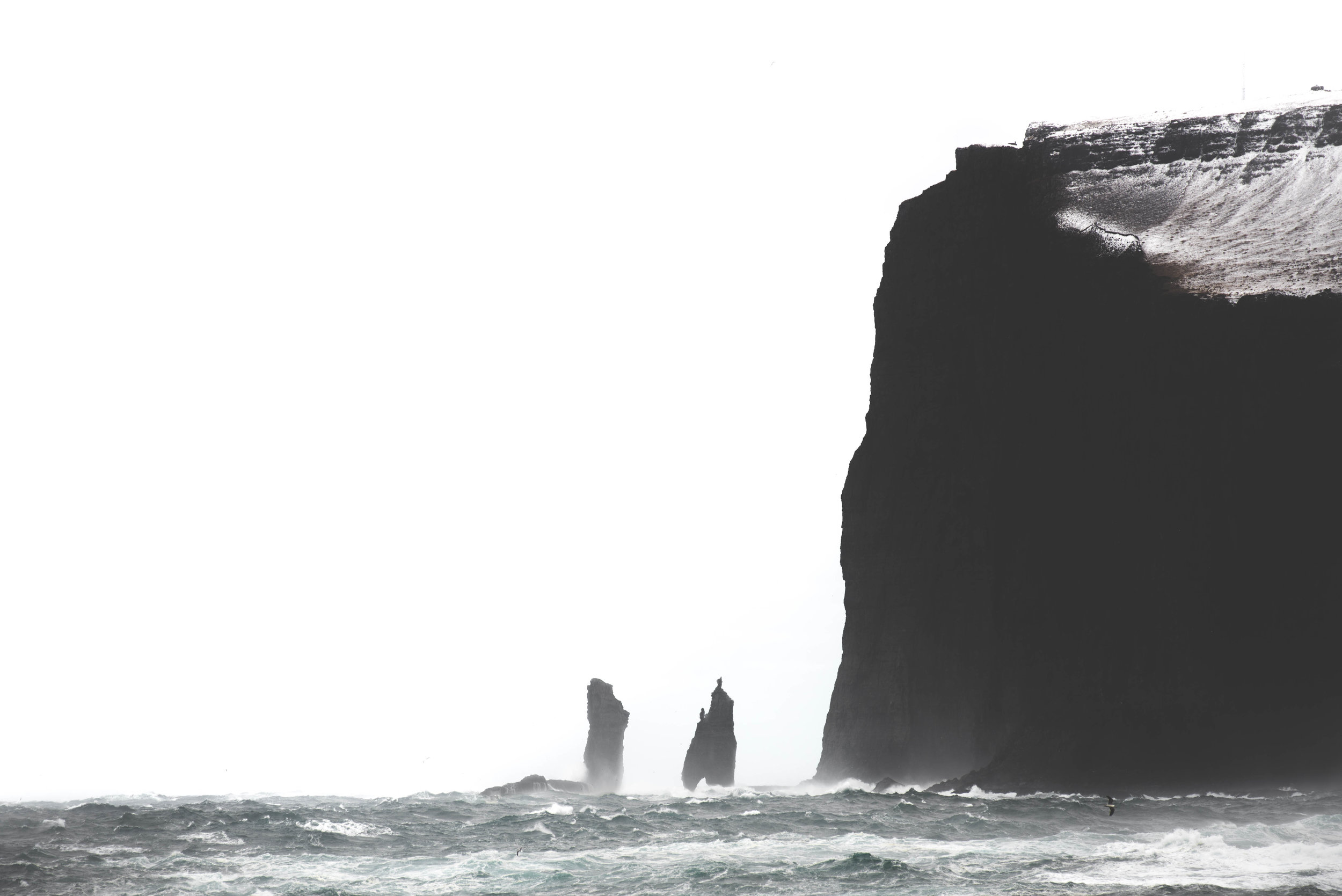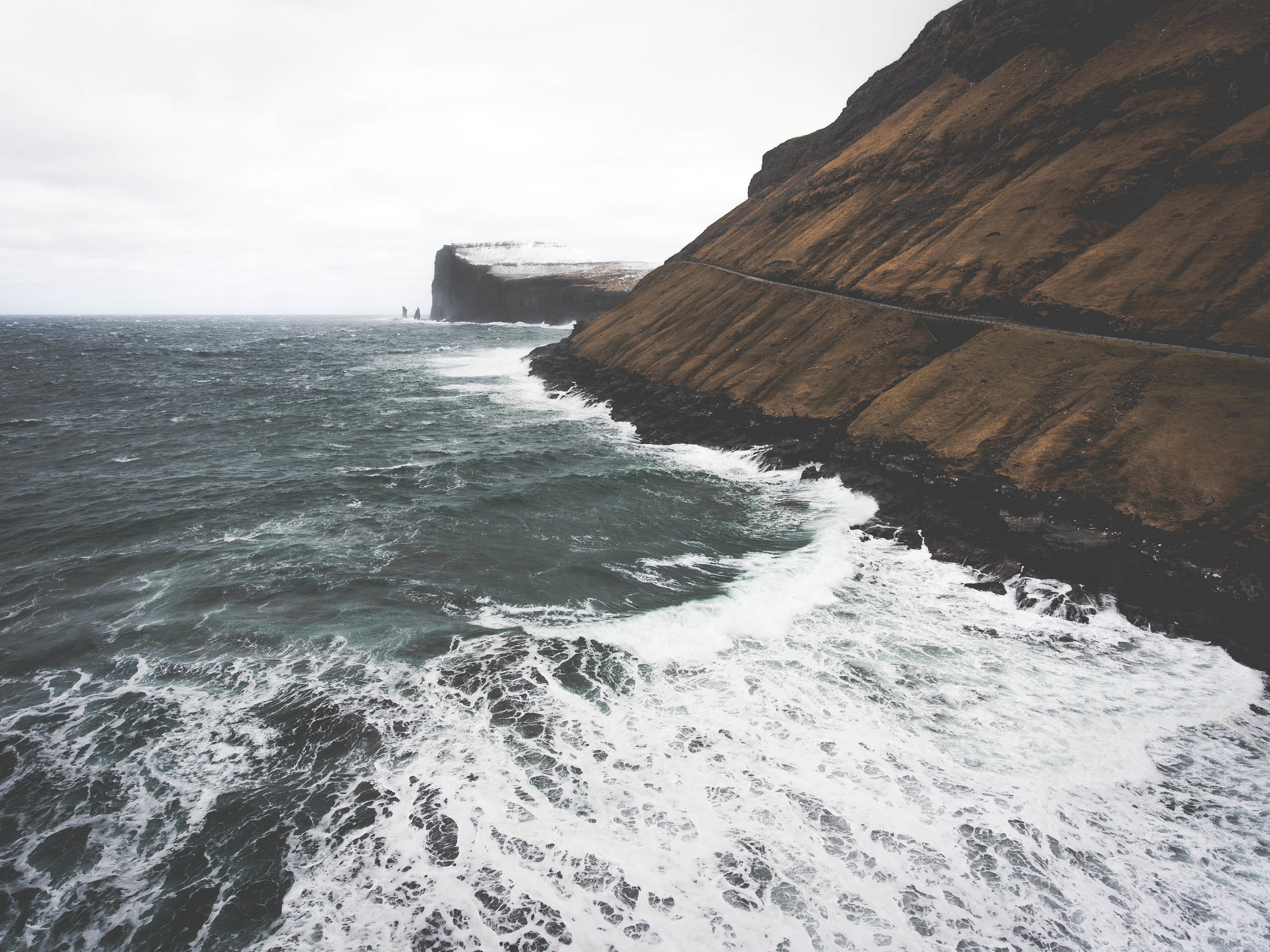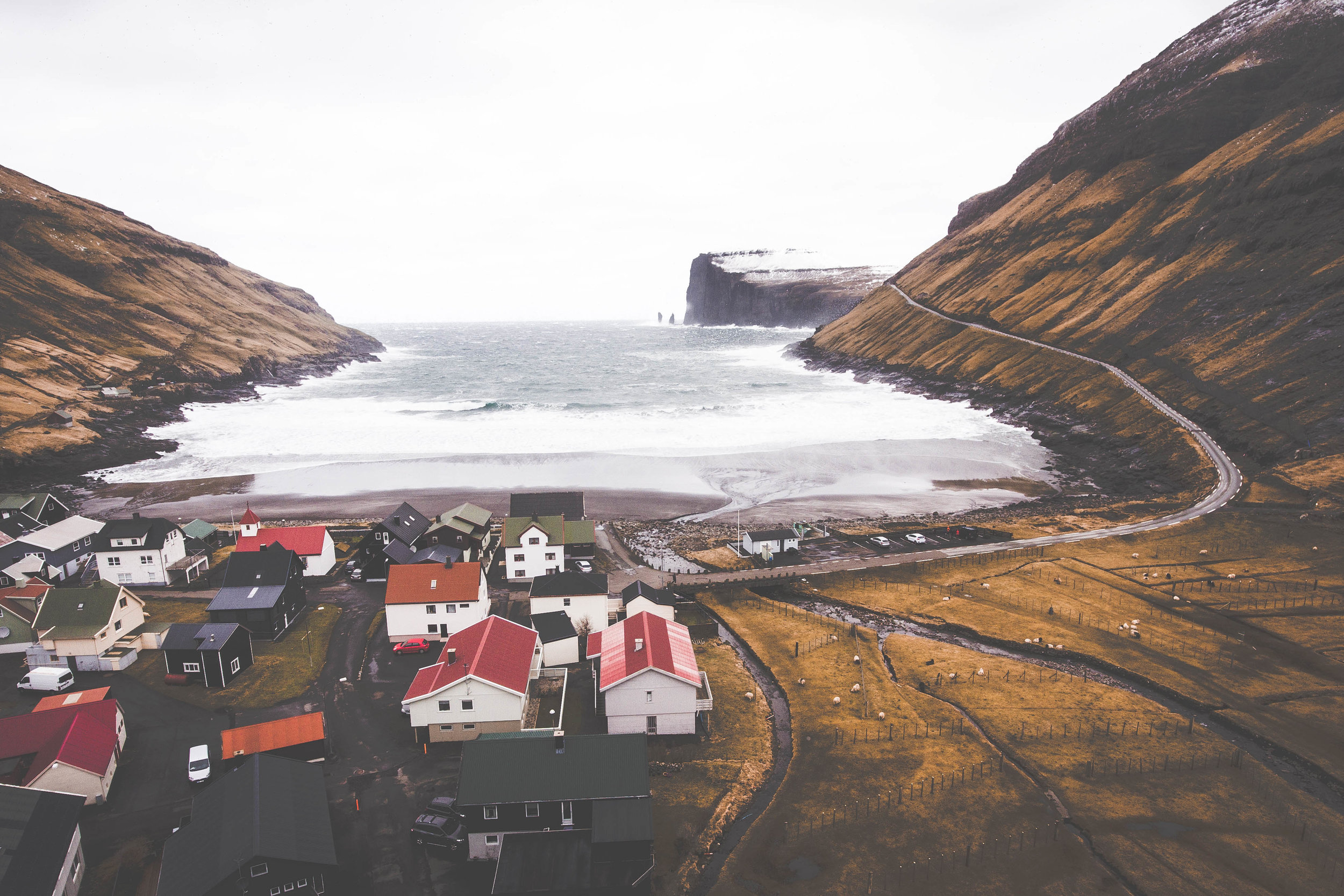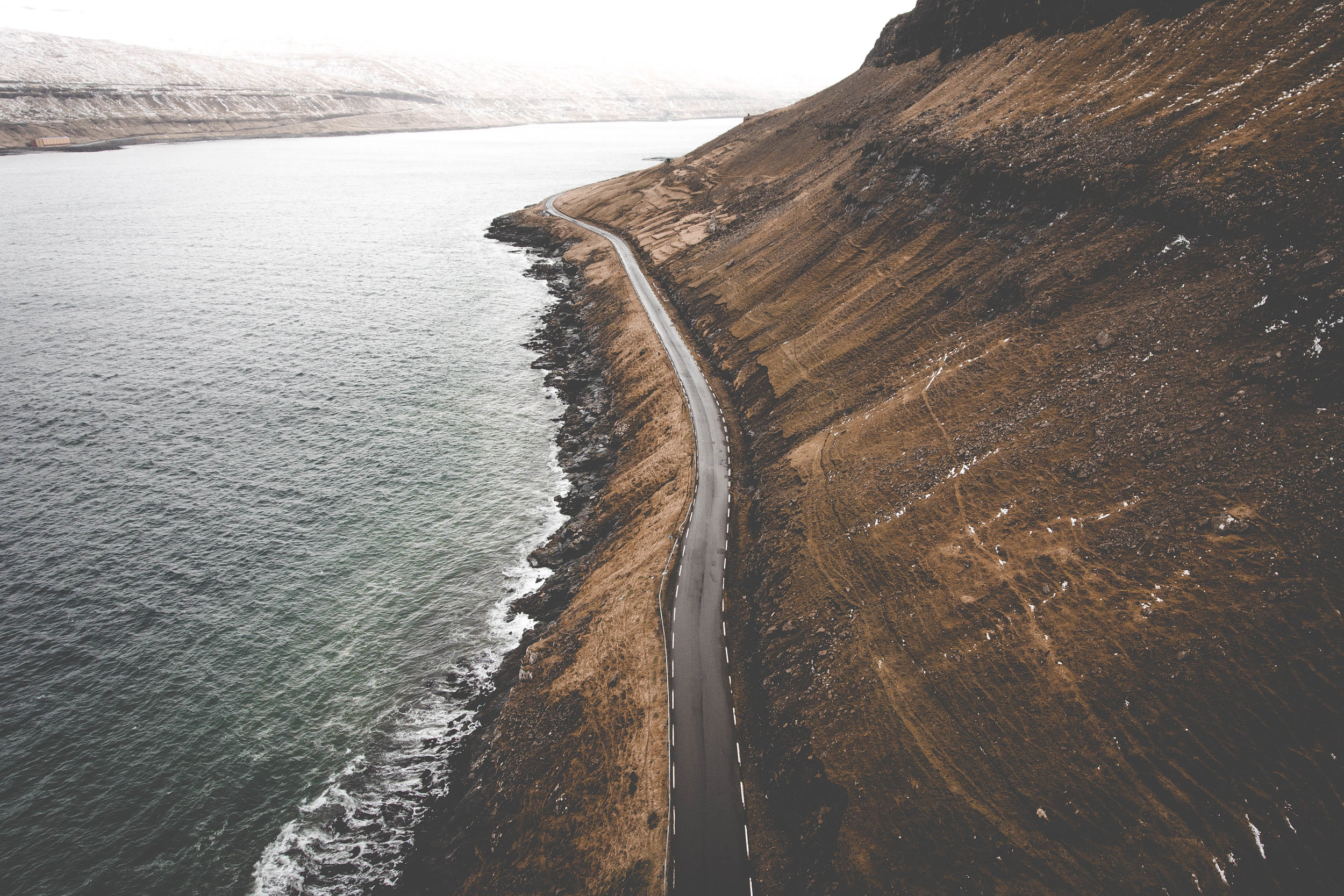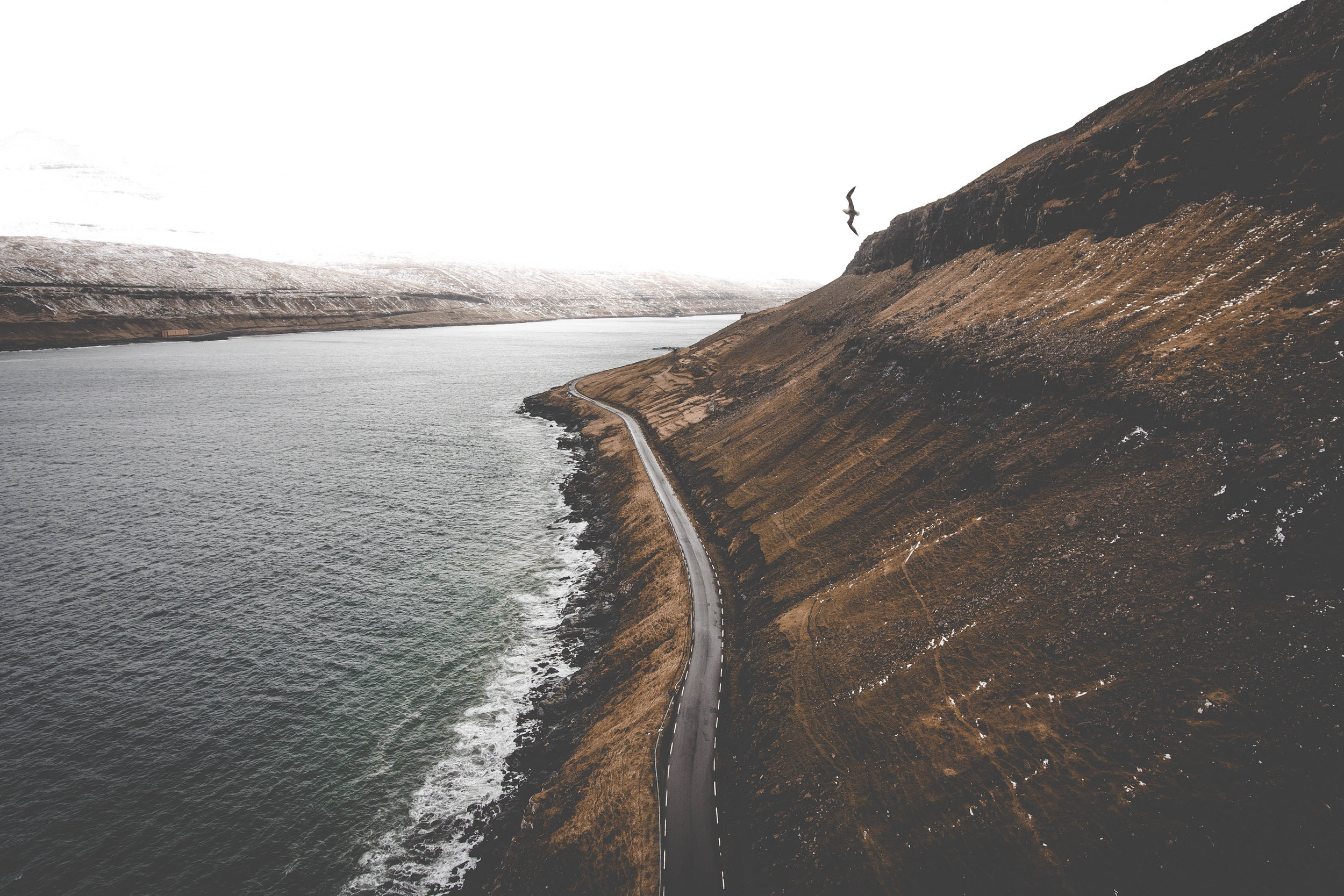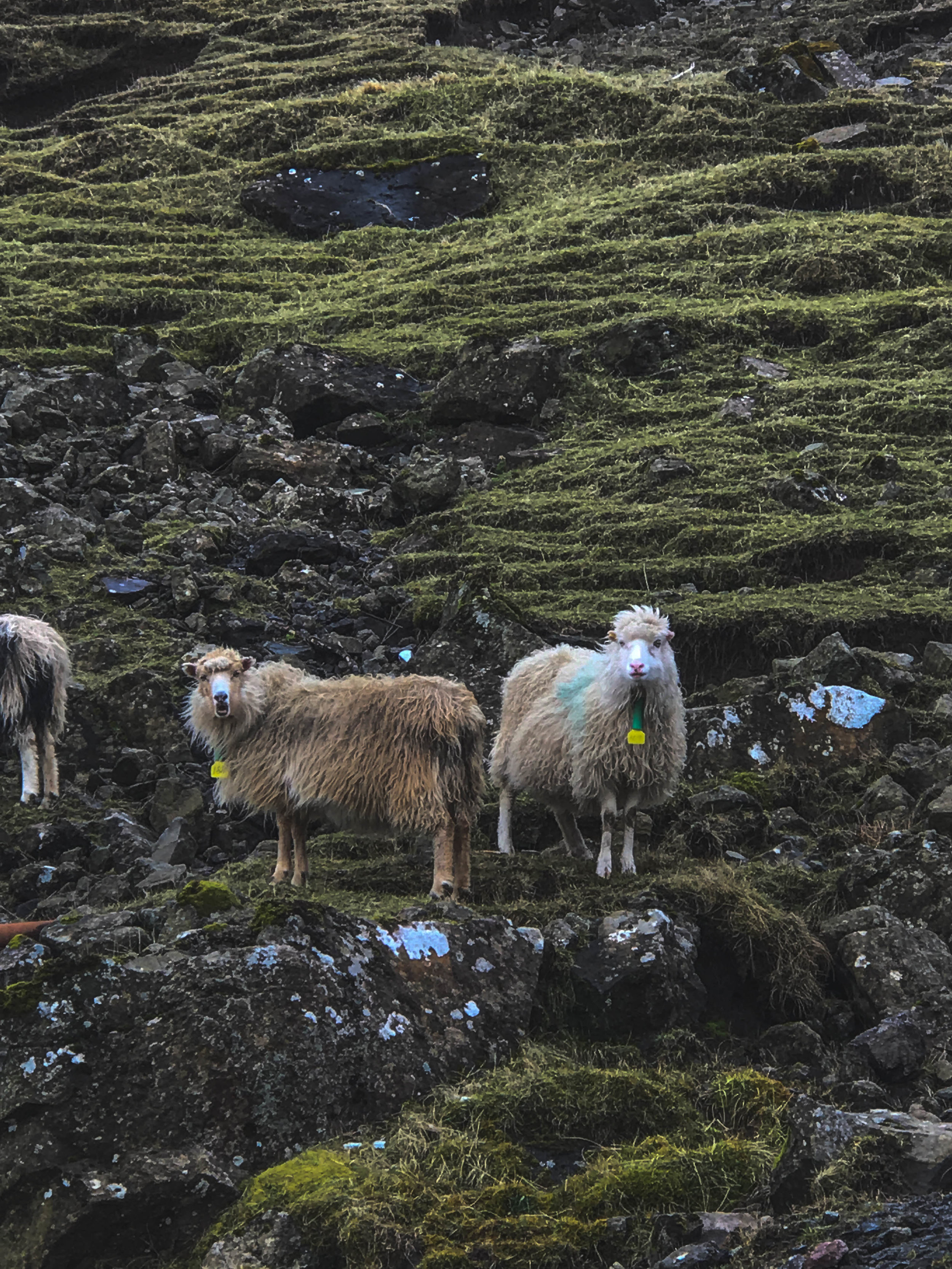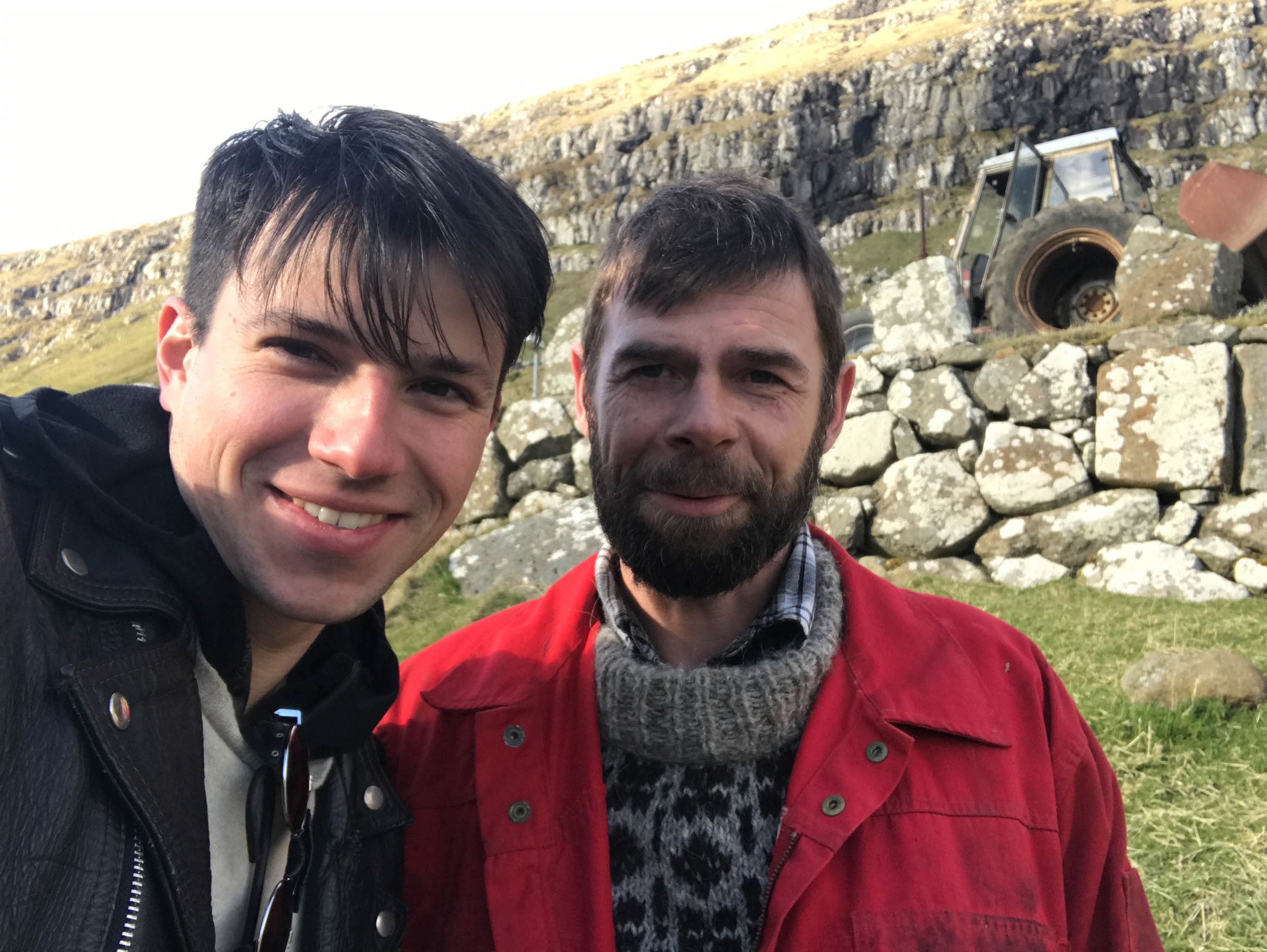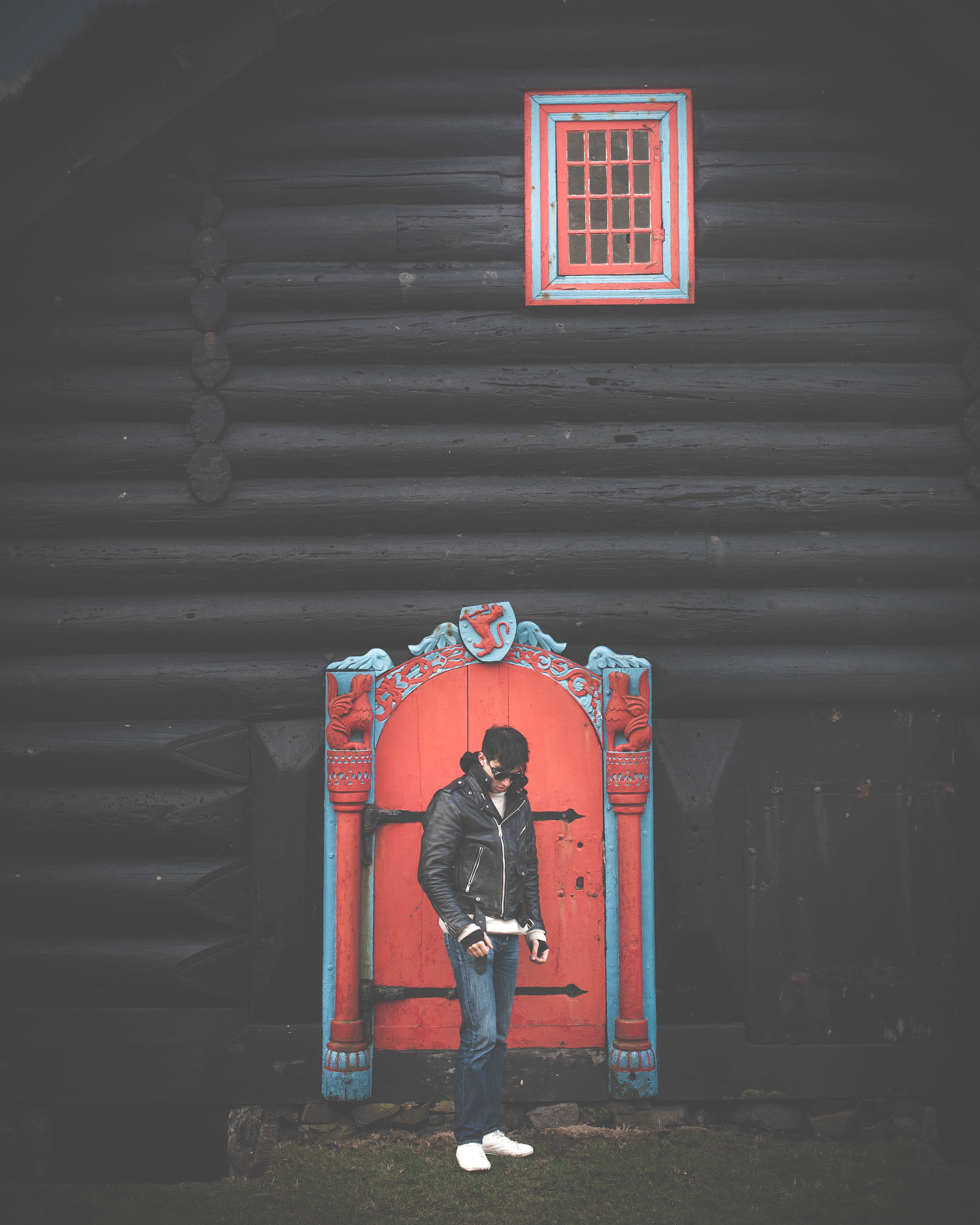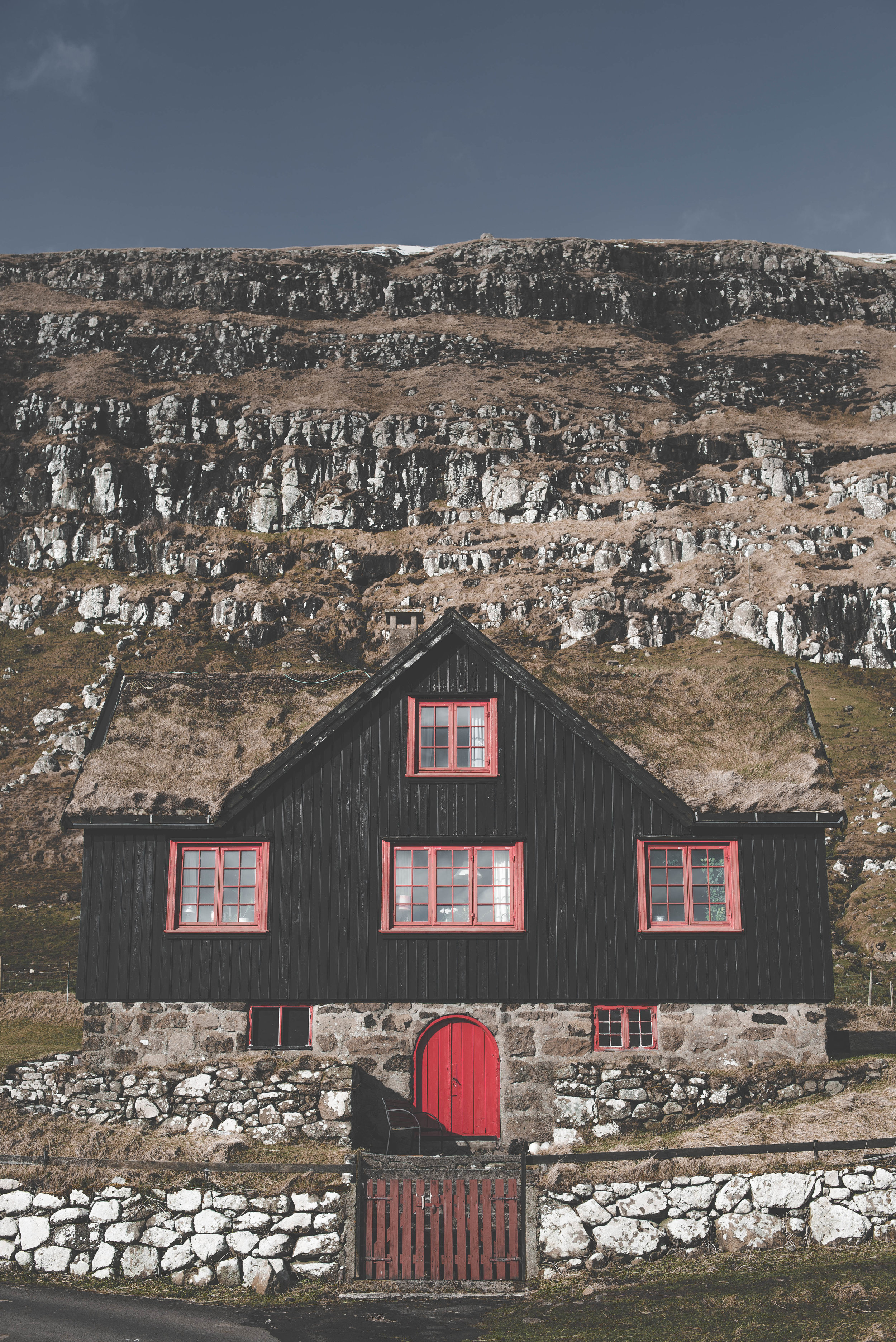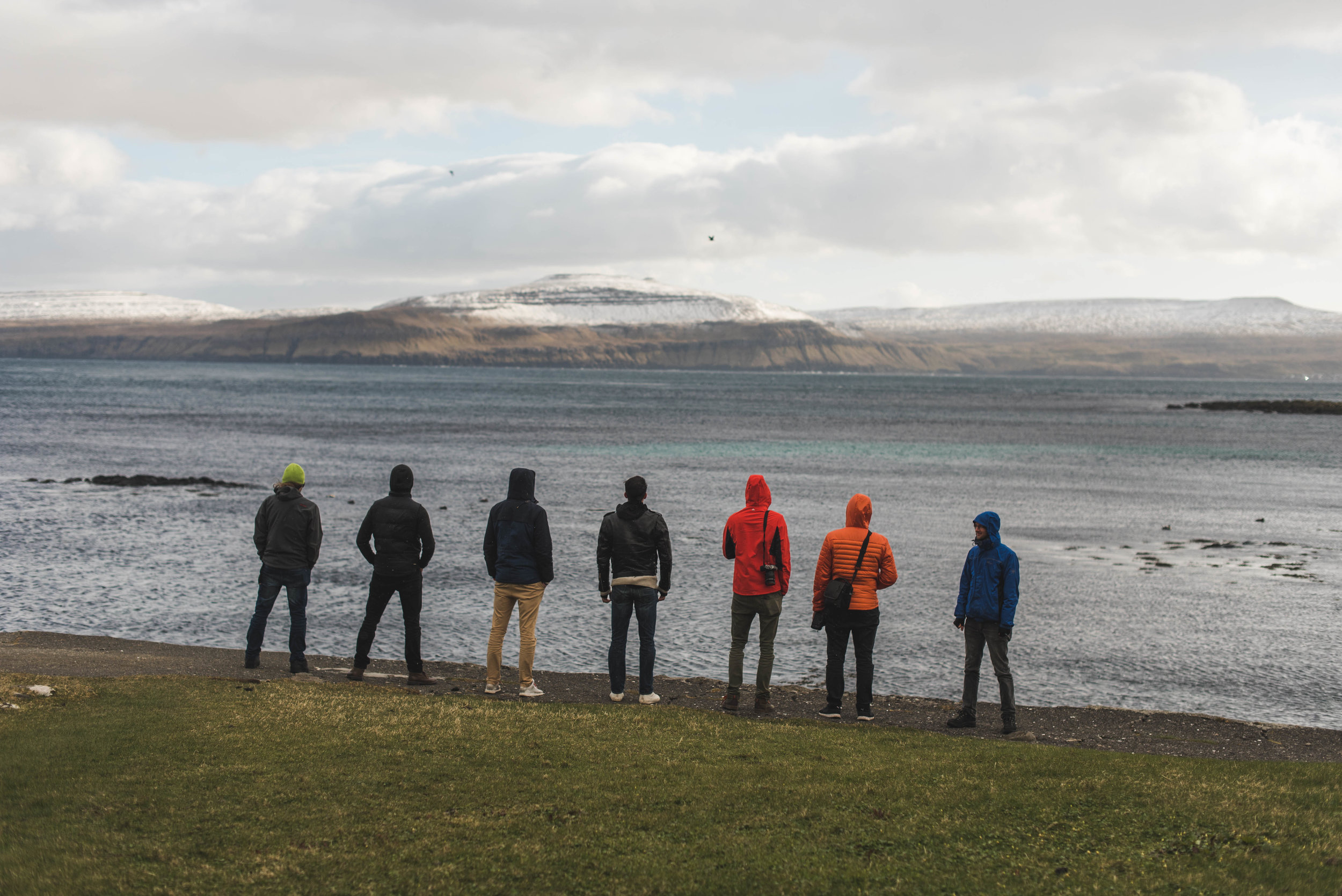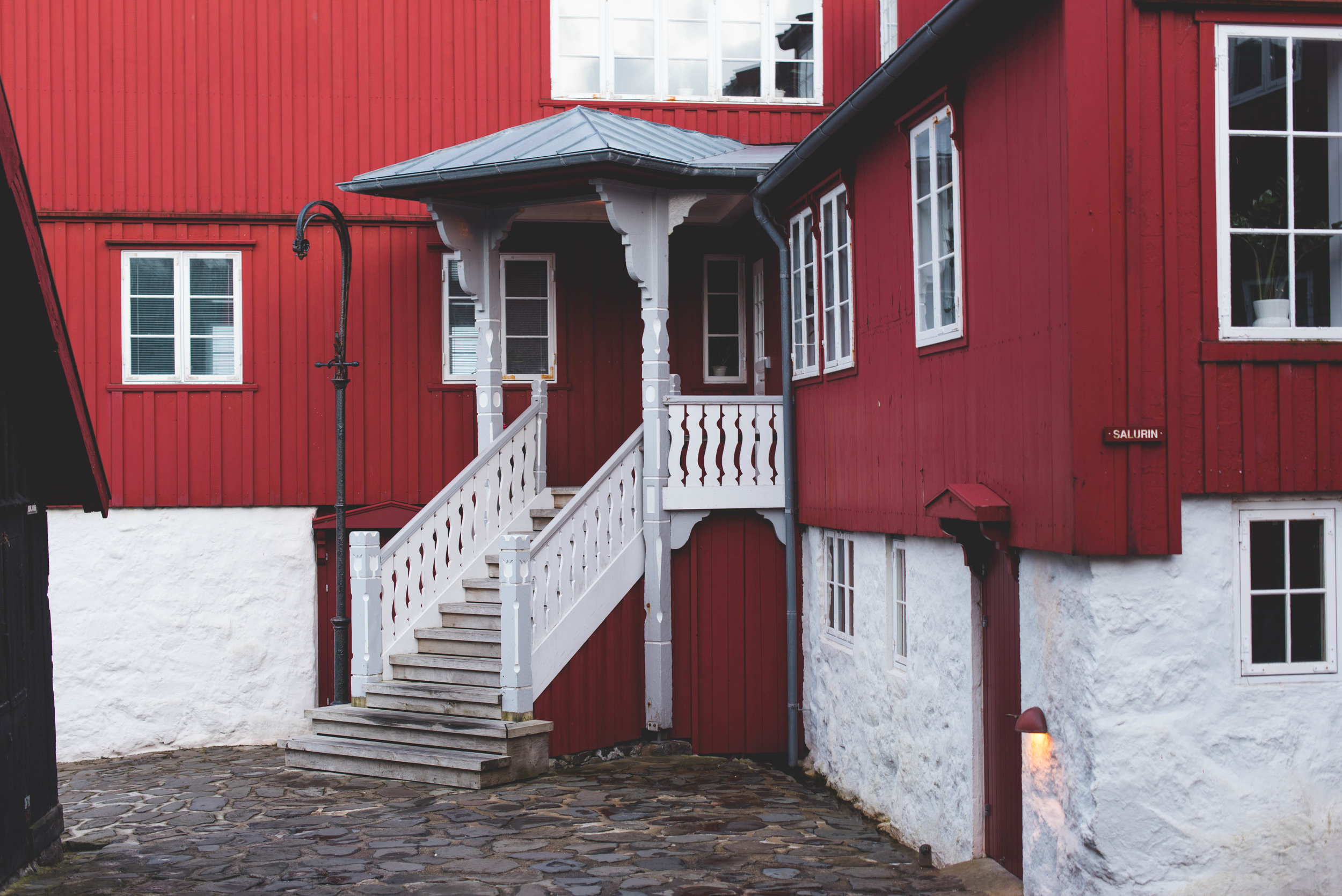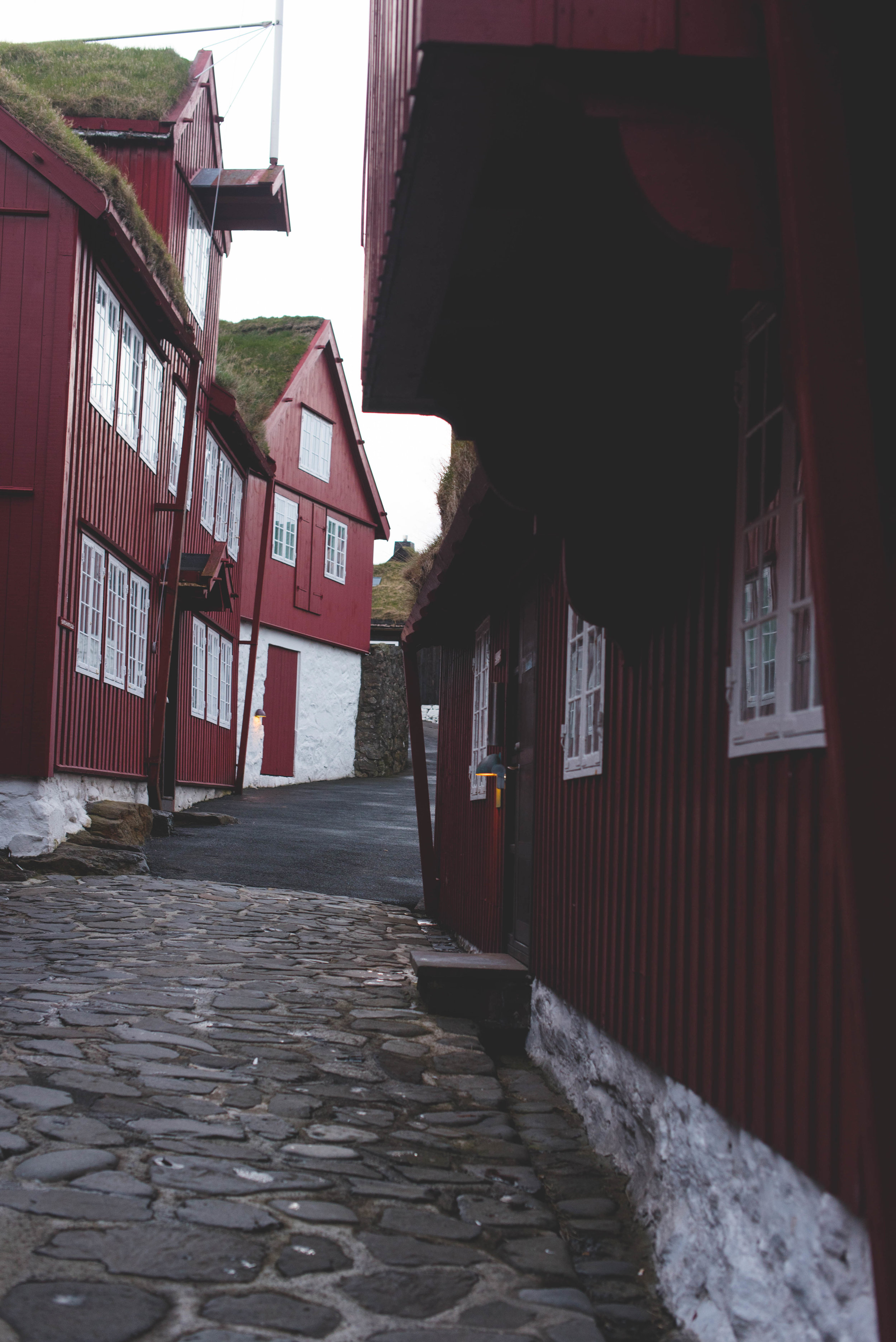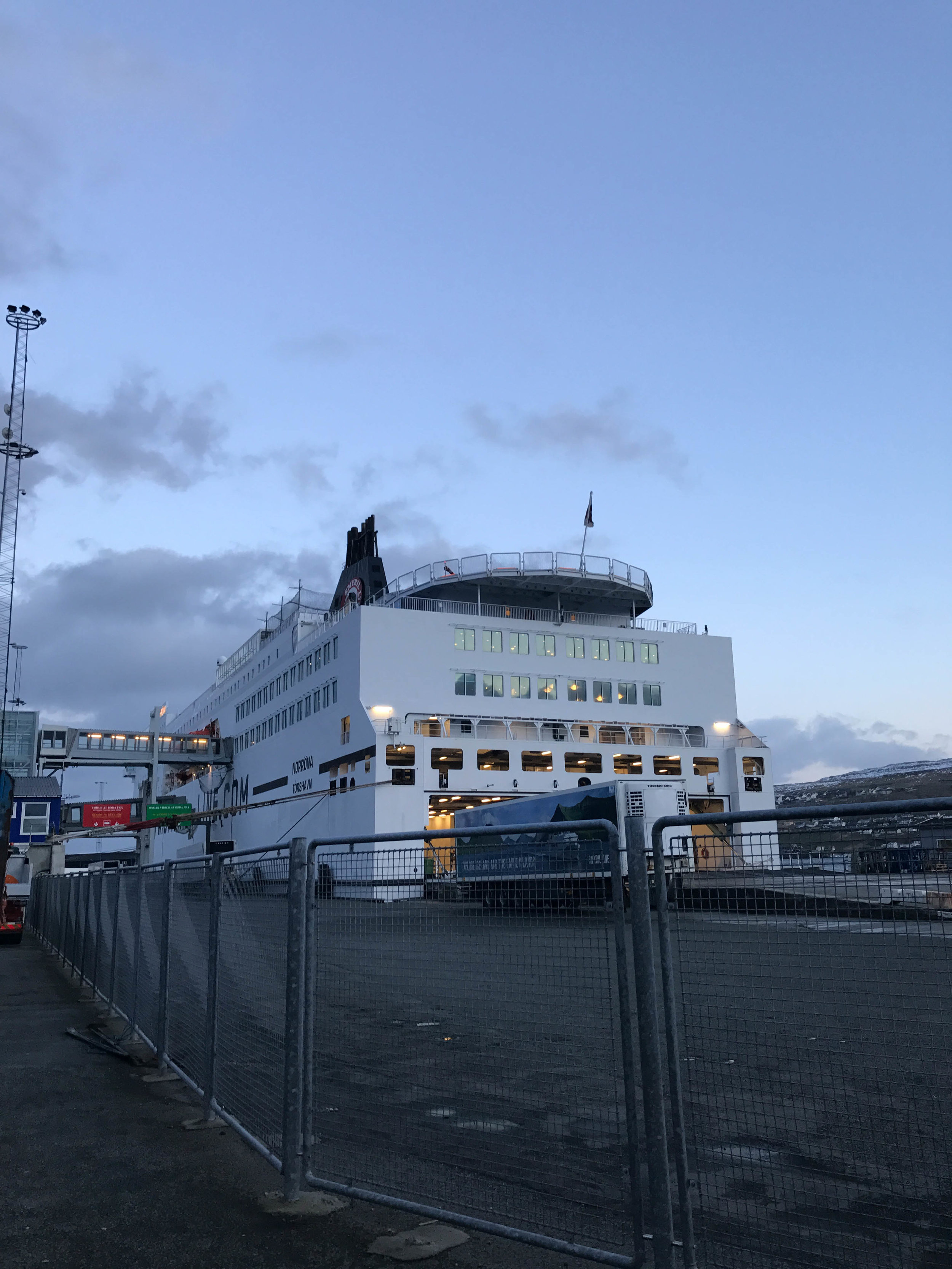It is a 36 hour journey from Hirsthals, Denmark to Thorshavn, Faroe Islands.
Being at sea was a bit harder than I thought it would be. It certainly had a lot of novelty value, and on the scale 1 to vomming absolutely everywhere, I was probably at around 4, which left me more than a bit sea sick, where it would come and go.
The Faroes inspire a similar kind of awe to that which you experience in Iceland, epic landscape, deep fjords, raging sea. It was wonderful to go back.
17 hours in the Faroes begins...
Sunrise over Nolsoy, storm clouds dissipating
Staying up on the higher decks with a view of the horizon was definitely the way to go, and the outer deck was lovely when the sun was shining. Eating a lot was super important too. Although the sea sickness left you not feeling very hungry, which was ironic.
Moody Faroe Islands
A few hours before we arrived, the captain announced that we would be in the Faroes an extra 12 hours, on the count of bad weather on the passage to Iceland. Imagine what that would have been like if we had gone through that!
This was music to my ears, and immediately I thought about all the places I would go with all of my time.
And then there was a problem. I had not advised Smyril line that I wanted to take the car off the ferry, so it was placed in an inaccessible part of the car deck. The dream of roaming the faroes slipped away…
And then there was a solution: we made some friends on board, and they had a big van with plenty of seats. They had cameras and a drone too, so we were very much on the same page. We discussed some locations and off we went! So, from 05:00 to 00:00, we had the Faroes. And off we went.
Wonderful little churches of the Faroe Islands
After a very early and short little drive around Thorshavn, our first location was the famous Gásadalur. This is the one that is ALL over Instagram. Even I used it to try and get you to look at this blog post. It’s a dramatic cliff where a waterfall falls directly into the sea. This is the only place where I have ever seen such a thing. Does anyone out there know any places where that might be true too? Let me know if you have!
It was snowing, and that is pretty rare in the Faroes. We took the van down the steep fjord road, and when we tried to take it back up, it simply wasn’t happening. We were stuck.
It was very early in the morning, and the roads were being serviced, gradually. We called up the road authority and discovered that the truck was coming to clear the snow and sleet from the road, but we had to wait an hour or two. Luckily, we had 15 hours so it wasn’t an issue. We took refuge in a warm café with a cute dog, so we drank tea and waited.
We tried to go and photograph the waterfall, but it was much too blizzard-y, and so we retreated. Hopefully you can get a sense of the conditionsin the pictures below.
We didn’t wait long. The snow truck came an hour later, and our van was able to climb the fairly steep fjord road.
In the end, it calmed down sufficiently in order us to go and see the waterfall, but then it picked and got all crazy again, so we had to make an escape. By the point, we had already gotten the van up the steep fjord road, so we had to walk all the way up. Not too bad, but pretty hard given the conditions.
The weather in Iceland is changeable, they said. You could also say the same about the Faroes. For about 30 minutes after a blizzard at Gasadalur, we had glorious sunshine.
Our next stop was the villege of Tjørnuvik, famous for the Witch and the Giant, sea stacks that lie far out to sea.
There's a nice back story here to the legend of the Witch and the Giant goes something like this:
Once upon a time, the giants in Iceland got jealous and decided they wanted the Faroes. The Witch and the Giant went down to the Faroes to go and get them. They struggled to climb the cliff, not noticing the time. Day broke, the sun shined, and they turned to stone. And so goes the legend of the witch, frozen forever in the village of Tjørnuvik, in the north of the island of Streymoy, punished by the raging sea forevermore.
I had some wonderful times here during my summer in the Faroes in 2014. It was wonderful to go back there and see it all again. This took on new meaning since I became a photographer, which wasn't the case when I lived there.
Amazing spots to pull over, take photos and drone. Some of those roads in the Faroes were unbelievably beautiful. Infinity points everywhere. And birds! It was amazing to have the drone out there too. Very necessary. These days, a flying camera is as import as the more terrestrial sort.
We left the small village, the Witch and the Giant and headed off back to the capital. It was mid afternoon at this stage and we were looking to get some food.
Our third location in the Faroes was the village of Kirkjubøur. For hundreds of years, this was the Capital of the Faroes before Thorshavn. The natural harbour seemed to be a natural place for driftwood to collect, which allowed people to build houses and settle.
I was lucky enough to catch the farmer while he was busy. I deliberately didn't warn him I was coming, although this had more to do with the fact that I didn't know if I would make it or not. I grabbed a selfie with him which you can see below. He hadn't changed one bit.
It's a very special village: all the buildings are black, and all the windows are red. They have whale bones for garden fences and 12 Highland Cattle, a Scottish breed, but the only ones in the Faroes.
The famous Roykstovan, at Kirkjubøur, is a wooden house on the farm. It is one of the oldest still- standing, still lived-in wooden buildings in the world. Dating back 900 years. It was truly wonderful to go back and visit the farm, if only for a time. I managed to meet the farmer and give him a hug, and grab a selfie!
Also, sheep everywhere, and they give you this eerie, vacant stare.
Above, you can see the whole group posing for a self portrait. There were quite a few nationalities representated: Brazil, Poland, UK, Germany and Jamica.
Lastly, we came back to Thorshavn and wondered around town, to see out the evening. These parts of the town are the very oldest part of the town, dating back to the early 19th century.
By the time the evening came around, it was time to get back on the ferry. The sun was setting late, and it was a lovely evening in Thorshavn, warmer than i remember it being, even though this was spring not summer.
And so, onwards we went, into the night as we had done on previous days, whether they were spent on the road or at sea.
Iceland was coming. We had nearly completed our journey. However, there was still the small matter of travelling half way across Iceland from the ferry port town to Reyjavik, where I live.
That’s the third part of the story.






